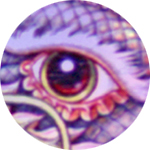
Originally Posted by
Ronin22

Finally, yinyang also plays a pivotal role in traditional Chinese thought about health and the human body. The early medical text known as the Huangdi neijing (The Yellow Emperor’s Classic of Internal Medicine) provides a detailed account of physiological functions and pathological changes in the body and guidance for diagnosis and treatment in terms of yinyang. Five zang (organs) -- the kidneys, liver, heart, spleen and lungs -- are classified as yin. They control the storage of vital substance and qi. Six fu (organs) -- the gallbladder, stomach, small and large intestines, urinary bladder and triple burner (referring to three parts of the body cavity: the upper burner, which houses the heart and lungs; the middle burner, which houses the spleen and stomach; and the lower burner, which houses the kidney, urinary bladder and small and large intestines) -- are yang and control the transport and digestion of food. The storage is a yin function, and the transport and transformation of substance is a yang function. But the zang and fu organs can be further subdivided into yin and yang. The activity or function of each organ is its yang aspect, while its substance is its yin aspect. Yin should flow smoothly and yang should vivify steadily. They regulate themselves so as to maintain equilibrium. Yin and yang do not exist in isolation but are in a dynamic state in which they interact and fashion the complicated and intricate system of the human body.
Back to Table of Contents
5. The Yinyang Symbol
There is no a clear and definite way to determine the exact date of origin or the person who created the popular yinyang symbol. No one has ever claimed specific ownership of this popular image. However, there is a rich textual and visual history leading to its creation. Inspired by a primeval vision of cosmic harmony, Chinese thinkers have sought to codify this order in various intellectual constructions. Whether to formulate this underlying pattern through words and concepts or numbers and visual images has been debated since the Han dynasty. The question first surfaced in the interpretation of the Yijing. The Yijing is constructed around sixty-four hexagrams (gua), each of which is made of six parallel broken or unbroken line segments (yao). Each of the sixty-four hexagrams has a unique designation; its image (xiang) refers to a particular natural object and conveys the meaning of human events and activities. The Yijing thus has generated a special way to decipher the universe. It mainly incorporates three elements: xiang (images), shu (numbers), and li (meanings). They act as the mediators between heavenly cosmic phenomena and earthly human everyday life. From the Han dynasty through the Ming and Qing dynasties (1368-1912 CE), there was a consistent tension between two schools of thought: the school of xiangshu (images and numbers) and the school of yili (meanings and reasoning). At issue between them is how best to interpret the classics, particularly the Yijing. The question often was posed as: “Am I interpreting the six classics or are the six classics interpreting me?”
For the school of Xiangshu the way to interpret the classics is to produce a figurative and numerological representation of the universe through xiang (images) and shu (numbers). It held that xiangshu are indispensable structures expressing the Way of heaven, earth and human being. Thus the school of Xiangshu takes the position that “I interpret the classics” by means of the images and numbers. The emphasis is on the appreciation of classics. The school of Yili, on the other hand, focuses on an exploration of the meanings of the classics on the basis of one’s own reconstruction. In other word, the school of Yili treats all classics as supporting evidence for their own ideas and theories. The emphasis is more on idiosyncratic new theories rather than the explanation of the classics. In what follows, our inquiry focuses on the legacy of the Xiangshu school.
The most common effort of the Xiangshu school was to draw tu (diagrams). Generations of intellectuals labored on the formulation and creation of numerous tu. Tu often delineate structure, place, and numbers through black and white lines. They are not aesthetic objects but rather serve as a means of articulating the fundamental patterns that govern phenomena in the universe. Tu are universes in microcosm and demonstrate obedience to definite norms or rules. During the Song dynasty (960-1279 CE), the Daoist monk Chen Tuan (906-989 CE) made an important contribution to this tradition by drawing a few tu in order to elucidate the Yijing. Though none of his tu were directly passed down, he is considered the forerunner of the school of tushu (diagrams and writings). It is said that he left behind three tu; since his death, attempting to discover these tu has become a popular scholarly pursuit. After Chen Tuan, three trends in making tu emerged, exemplified by the work of three Neo-Confucian thinkers: the Hetu (Diagram of River) and Luoshu (Chart of Luo) ascribed to Liu Mu (1011-1064 CE), the Xiantian tu (Diagram of Preceding Heaven) credited to Shao Yong (1011-1077 CE), and the Taijitu (Diagram of the Great Ultimate) attributed to Zhou Dunyi (1017-1073 CE). These three trends eventually led to the creation of the first yinyang symbol by Zhao Huiqian (1351-1395 CE), entitled Tiandi Zhiran Hetu (Heaven and Earth’s Natural Diagram of the River) and pictured above at the head of this entry.




 Reply With Quote
Reply With Quote



 what, the horse wasn't dead enough?
what, the horse wasn't dead enough?



